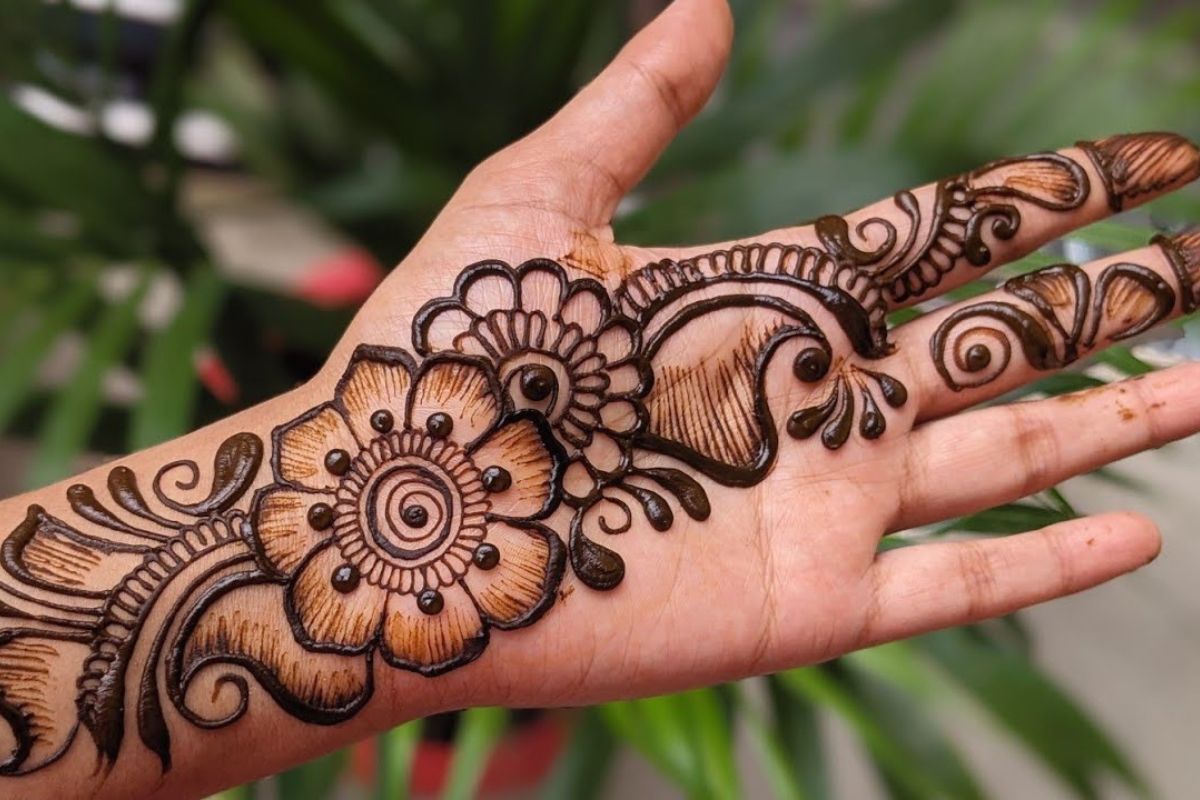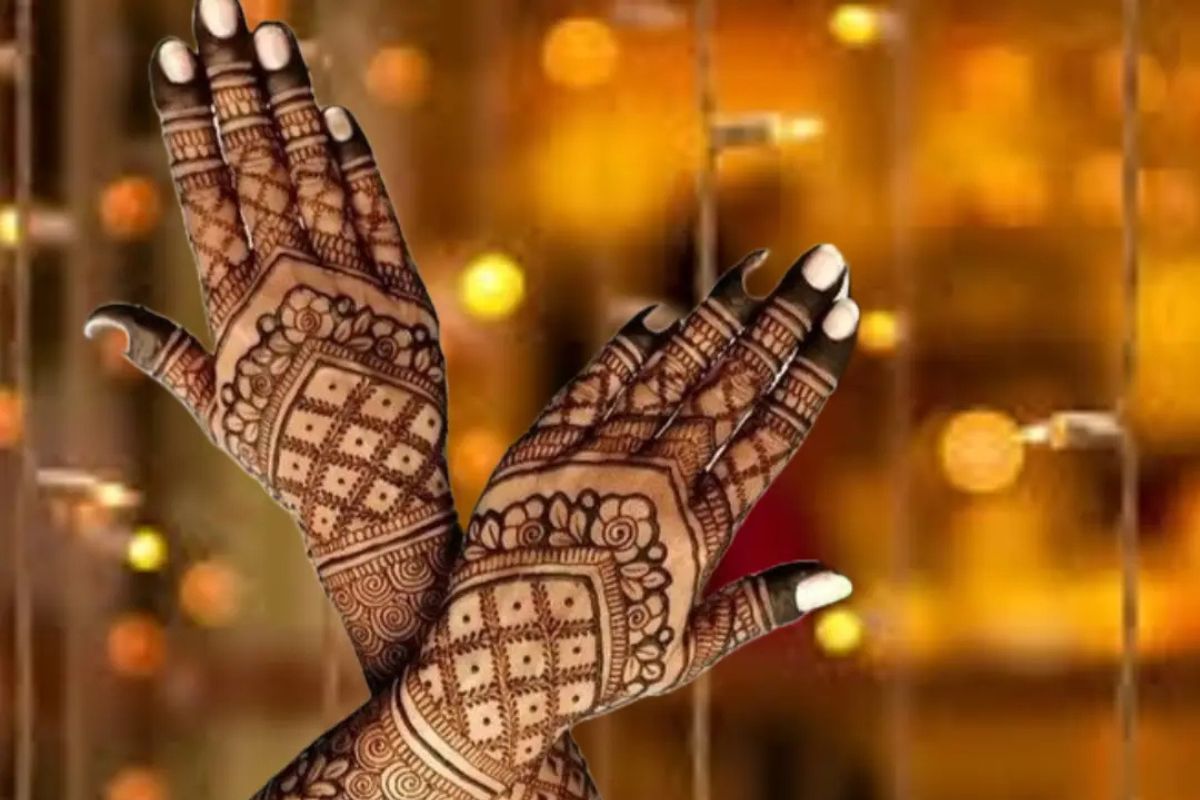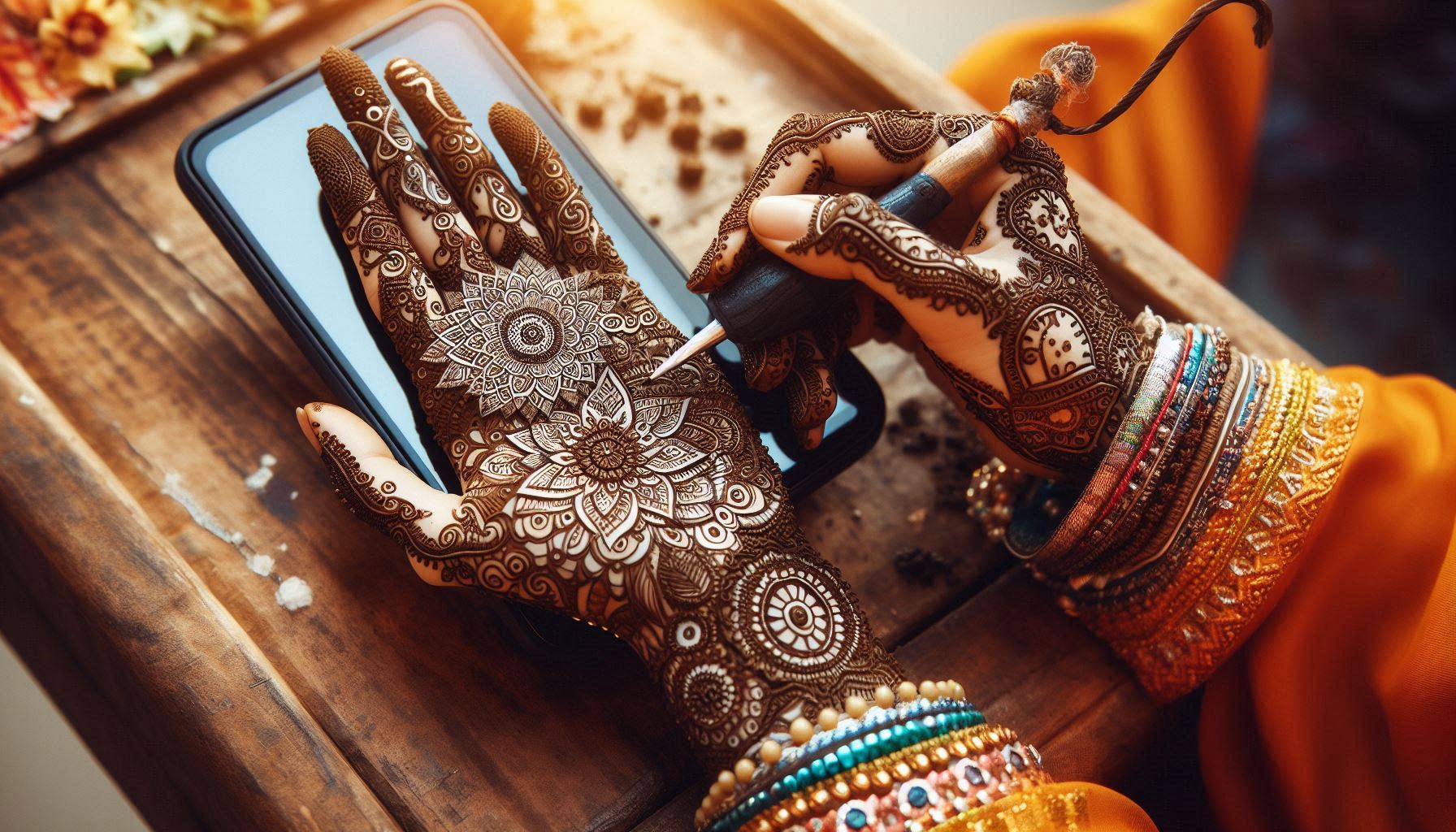Throughout thousands of years in India people have honored henna by calling it Mehndi (Heena) due to its role as a beautiful expression of joy and cultural identity. Individuals from Indian society traditionally decorate their hands and feet with Lawsonia inermis plant (Henna) leaf-derived natural dye at important life moments while also using it during festivals and tribal celebrations. In the heart of Indian tribes, henna art has not only preserved traditions but has also started to embrace new technology, creating a unique blend of old and new.
Important Tribal Communities and Their Henna Traditions
In India, several tribal communities practice henna art as part of their cultural heritage. The Gond tribe from central India, especially in Madhya Pradesh, Chhattisgarh, and parts of Maharashtra, uses henna during festivals and marriages. The tribal people adorn henna art with designs of natural elements which symbolise spiritual significance. The Bhil tribe practising henna traditions resides throughout western and central India from Rajasthan through Gujarat up to Madhya Pradesh. Bhil women create geometric patterns that represent their connection to the earth and natural world.

Centuries ago the Meena tribal community from Rajasthan started maintaining a specific system of henna art which they utilise to adorn their bodies at both traditional ceremonies and religious ceremonies. During Sohrai and Karam festivals the Santhal tribe of Odisha utilises henna for their ceremonial practices. Through henna designs the Rabari community of Gujarat and Rajasthan depicts their nomadic tales using motifs that represent camels in addition to desert plants and conventional jewellery patterns. The Banjara tribe occupies multiple states and showcases its colourful traditions by applying bold geometric patterns and mirror-work designs as their signature henna motifs.
Historical Significance of Tribal Henna Practices
Indian tribes have practised henna traditions since ancient civilizations during thousands of years. The practice of henna usage in India extends back to the Bronze Age period which began around 3000 BCE based on archaeological records. In tribal communities, henna application developed as both an art form and a ritual practice with deep cultural significance. The hot climate compatibility of henna together with its red-brown colour developed into symbols that represented lucky embryonic conditions. Over centuries, each tribe developed unique designs that reflected their specific beliefs, environment, and artistic traditions.

Cultural patterns moved from maternal lineage to the next female descendant and from grandmother to her granddaughter. Through the traditional practices of henna application women had opportunities to come together for socialising and education while building stronger community connections. The creative henna practice expanded through tribal symbolism which protected family identities. Numerous tribal communities practised henna applications throughout colonial periods because the tradition helped them defend their traditions against foreign influences. The tribal traditions of henna stay alive today in post-independence India to preserve connections with ancient cultural practices and native intellectual traditions.
Cultural Importance in Present Times
Today, tribal henna art remains vitally important to cultural identity and community cohesion. Trivial groups use henna ceremonies to build cultural transmission spaces which disseminate storeys and traditional knowledge to their younger members. Each design contains particular symbols which the community members understand as part of their shared cultural heritage. During weddings, a bride’s henna is particularly significant, with elaborate designs symbolizing her transition to married life and wishes for fertility and prosperity. According to tribal traditions darkness of henna stains affirms how profound his affection is for her. Within tribal culture henna creates visual marks which signify crucial events starting from pregnancies through births and reaching milestones during young adulthood.

In recent years, tribal henna designs have gained recognition beyond their communities as examples of India’s rich artistic heritage. Some tribal women benefit from economic opportunity because henna application to tourists and workshop instruction generate income. The commercialization of henna functions as a cause for worry because it leads to appropriation of cultural values as well as the degradation of authentic meanings. Numerous tribal communities protect their traditional henna practices through recording processes and giving lessons to new generations. These efforts help ensure that henna art continues as a living tradition rather than becoming merely decorative.
The Deep Roots of Henna in Indian Tribes
India traces its henna history through time until it was first utilised as a heat reducer for desert use. The symbolic meaning of henna developed into a representation of good fortune and happiness which tribespeople used at weddings together with festivals. The Indian tribal communities see henna application surpasses simple body decoration because it represents a sacred religious practice. Cartoonistic patterns of Indian tribal groups contain ancestral stories alongside messages about their natural environment as well as key spiritual elements. Different tribal groups developed distinctive artistic approaches because they employed henna to symbolise traditional life cycle ceremonies and agricultural harvests and sacred blessings of new events.

The Modern Makeover: Technology Meets Tradition
In recent years, the world has become more connected, and traditional henna art has started to evolve with the help of technology. Today tribal artists employ cones in their work to achieve delicate lines and they also use stencils and airbrushes for achieving symmetrical patterns and smooth designs. Some artists use 3D printers to develop powerful raised designs which people wear at special festivities and wedding celebrations. Social media platforms have given tribal artists the power to distribute their individual design aesthetics to an international audience.

Fusion Designs and Digital Influence
The newest generation of artists from Indian tribes combines modern techniques with traditional art designs to create contemporary patterns that earn approval from both young audiences and traditional Indian communities. A tribal artist combines classic peacock feathers by using digital art geometric shapes in their work. People of different generations now rely on smartphones for both global trend research and virtual henna education and instructional classes. The combination of Indian heritage and technological advances has created henna’s widest scope of usage.
Henna as Identity: Personal and Collective Expression
Uses of henna among Indian tribes extend beyond decoration through getting expression of identity. The created henna patterns convey individual meanings which represent wedding dreams for brides or rites of passage for young girls. The complete community unites together at festivities through the application of henna to enhance social ties while exchanging important values. Through henna art young people establish connections to their heritage because it links older and younger generations while allowing them to invent fresh artistic expressions.

Empowering Tribal Artists
Technology has also empowered tribal henna artists, giving them a platform to showcase their work and earn a livelihood. These tribal artists now operate online business operations which receive orders from India along with international locations. Certain tribal henna practitioners obtained recognition as social influencers because they generate audiovisual content about henna traditions through social media and video platforms. The advancement of technology has created economic growth opportunities together with social pride for various tribal populations.
The Future of Henna Art in Indian Tribes
Technology expansion allows Indian tribes to develop innovative methods which sustain their henna heritage alive. The combination of traditional henna teaching methods alongside modern techniques occurs in schools and community centres that educate children. Contemporary henna festivals organize competitions that stimulate artists to develop fresh designs within traditional henna guidelines. Through technological advancement tribal traditions have preserved henna art as a sustainable living practice.

A Symbol of Unity and Change
Henna serves today as a sign of collective cohesion that links diverse individuals across all age groups. The practice serves as a reminder that a diverse population brings great beauty while traditional heritage contains immense strength. Indian tribes demonstrate how society can preserve tradition by using new technology to build bridges between past and future. Henna art, with its deep roots and modern branches, continues to tell the story of India’s vibrant tribal identity.

Henna art in Indian tribes has traveled a long way—from ancient rituals to digital platforms. Human beings have employed this practice to honour celebrations and protect themselves and express their identity since ancient times. Today henna acts as an enduring symbol which links us to both our personal identity and our ancestral heritage because tradition connects with technology. The route of this art form demonstrates that creativity parallels self-identity because both entities perpetually grow while transforming and remaining perpetually attractive.
Also Read: Ink & Identity: How Tattoo Traditions in Indian Tribes Speak Volumes
You can connect with DNN24 on Facebook, Twitter, and Instagram and subscribe to our YouTube channel.

